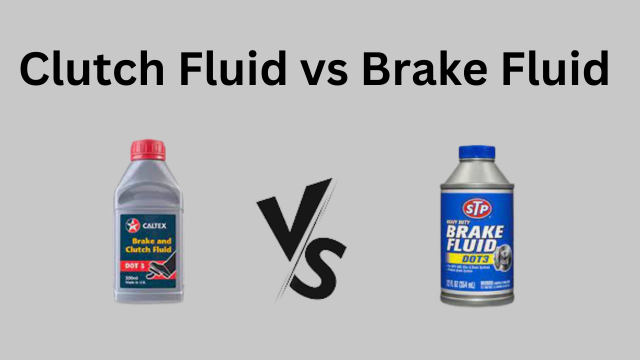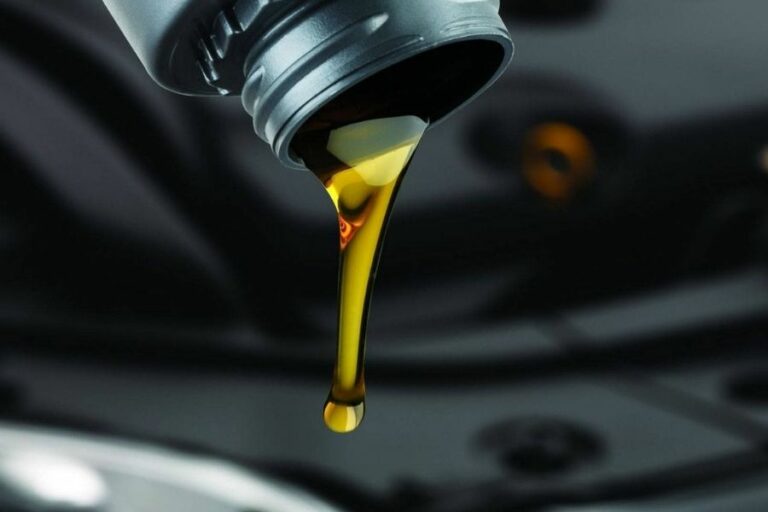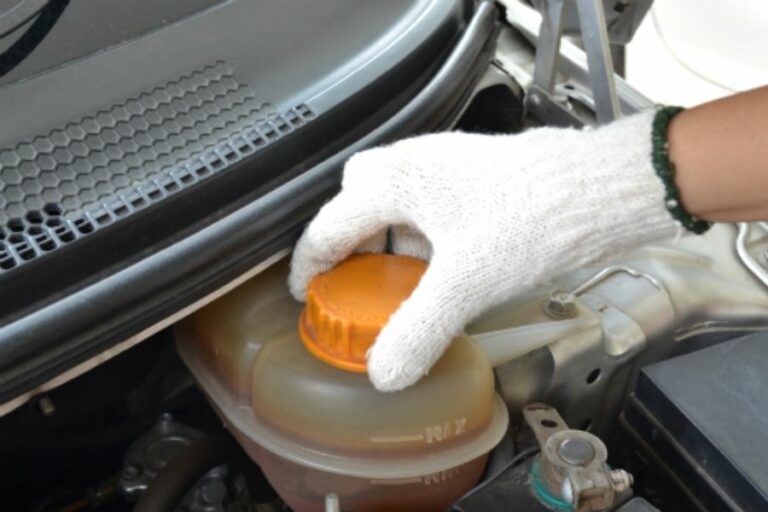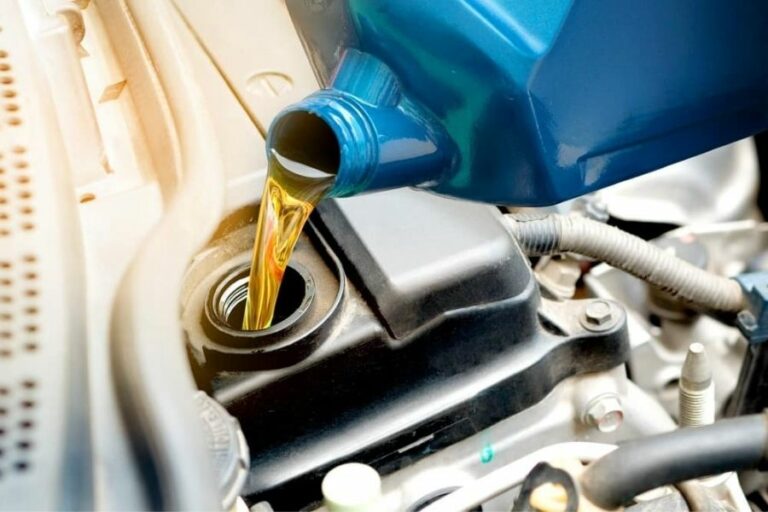Why Fuel Pump Won’t Turn on with Ignition? 10 Major Reasons
You have plans to attend an important meeting or want to chill out with your family and friends but when you try to start your car you notice that the fuel pump won’t turn on with ignition. What an absolute tragedy, isn’t it?
According to the experts, your car’s fuel pump won’t be able to turn on with ignition if you have a faulty ignition module installed, issue with your car’s ECU system or the fuel pump itself is gone etc.
I have conducted thorough research and I have come up with some other major factors that are responsible for preventing your car’s fuel pump from turning on with ignition. If you want to know about the factors as well then let’s have a closer look, shall we?
Fuel Pump Not Turning on with Ignition: A Quick Overview
Now, let us have a quick look at both major and minor factors that are usually responsible for your car’s fuel pump won’t kick on with ignition. The factors are presented in the form of a table for your easy understanding and for having a quick overview.
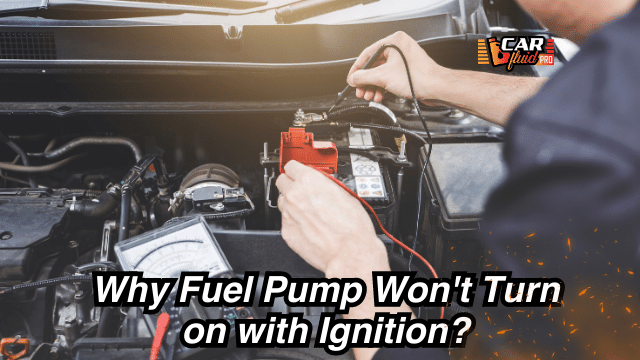
| Major Factors | Minor Factors |
| Bad Crank SensorFaulty MAP SensorShorted CAM SensorFaulty Ignition ModuleBad MAF SensorFaulty Speed SensorDamaged Fuel Pump RelayFaulty PCM SensorBad ECU SystemBad/ Damaged Fuel Pump | Tripped Inertia SwitchBad EEC RelaySpark Plug or Wiring ProblemsFaulty Heater CircuitEngine Vacuum LeakBad Timing BeltFaulty Batteries or Terminals |
Why Fuel Pump won’t Turn on with Ignition: 10 Major Factors
Having seen the table above which contains all the major and minor factors that may cause your car’s fuel pump doesn’t turn on when needed, let’s now talk about the major factors in detail and also learn the secrets about fixing them. Here are the major factors:
1. Bad Crank Sensor
A crank sensor is an electronic device that is used inside the internal combustion engine both in petrol and diesel-run engines.
It is a multipurpose sensor that is tasked to control ignition timing, calculate relative engine speed, and detect RPM as well. It is also responsible for detecting which cylinder is firing and which is not.
So, naturally, your fuel won’t turn on, if you have a wrong or faulty crank sensor in your engine. Because it will send wrong data or no data to the ignition system at all. As a result, you will get no ignition and your fuel pump won’t start at all.
Quick Fixing Tip
To solve the issue, quickly remove and scan your vehicle’s crank sensor with the help of a multimeter. If you find it damaged or faulty, have it replaced as quickly as possible.
2. Faulty MAP Sensor
A Manifold Absolute Pressure Sensor or MAP sensor is an electronic sensor that is usually seen in fuel-injected vehicles. It is generally used in the electronic control unit system of the engine.
The main duty of the MAP sensor is to provide manifold pressure information to the ECU system of the engine. This information is crucial to determine how much fuel is required for perfect combustion or ignition.
If you have a MAP sensor that is broken or faulty, it cannot send the right information which is required for perfect ignition. As a result, you fail to turn on the fuel pump of your vehicle with ignition.
Quick Fixing Tip
MAP sensors become contaminated by carbon or other deposits from the engine. You can take attempts to clean your car’s MAP sensor with the help of an electric parts cleaner quite easily. If the problem still persists, consider replacing the sensor altogether.
3. Shorted CAM Sensor
Camshaft position sensor (CMP) usually monitors the original position of the camshaft and its rotational speed as well. It is mainly used to determine the particular stroke of the piston.
Information that the camshaft sensor sends to the engine control module of the vehicle (ECM) is used to control fuel injection and variable valve timing.
If you have a faulty cam sensor, your vehicle will not get the required amount of information needed for a perfect ignition. As a result, your fuel pump will fail to turn on with ignition.
Quick Fixing Tip
If you have a faulty CAM sensor installed in your car’s engine then the only way you can fix it is by replacing it completely. To do that you must have a ratchet, sockets, and a new CAM sensor ready to be installed in place of the old one.
4. Faulty Ignition Module
The ignition control module refers to the solid-state switching device that controls and monitors the operation of the ignition coils. It is used to spark generation in different internal combustion engines.
The exact location of the ignition module largely depends on the ignition system you have in your car. It may be located inside a distributor, mounted on a bracket in the engine compartment, or maybe an integral part of your vehicle’s powertrain computer.
A faulty ignition module system usually lacks one or two functional coils to step up the voltage. As a result, there will be no spark and no spark means your fuel pump won’t turn on with ignition.
Quick Fixing Tip
Faulty ignition modules are not that easy to replace manually. So, you are advised to consult an expert mechanic to do the job for you.
5. Bad MAF Sensor
Mass air flow sensor or MAF sensor is one of the key components in your car’s electronic fuel injection system. It measures the amount of volume and density of the air getting drawn into your vehicle’s engine.
The MAF sensor sends out small signals to the car’s computer and directs what amount of air is needed to match the right amount of fuel so that your vehicle runs smoothly and flawlessly.
The accuracy of the MAF sensor is pretty crucial to ensure that your car runs efficiently. If it becomes dirty or faulty in any way, your engine will stop functioning normally and your fuel pump won’t start that easily.
Quick Fixing Tip
You can clean your MAF sensor very easily at home rather than going to the mechanic and have it replaced completely. To clean the MAF sensor, use a specific cleaner only designed for this specific purpose. Install a new dust filter to avoid the dust from blocking the system.
6. Faulty Speed Sensor
The function of the vehicle’s speed sensor (VSS) is to measure transmission speed or wheel speed.
This information is used by the ECM to perform and modify various engine functions such as transmission shift points, ignition timing, air/fuel ratio, and initiate diagnostic routines.
A faulty speed sensor sends incorrect data to the ECM and fails to perform these crucial engine functions and thus resulting in the fuel pump not turning on with ignition.
Quick Fixing Tip,
Unfortunately, if a speed sensor becomes faulty you cannot fix it in any way possible. So, you must consult your mechanic guy and have him replace the sensor for you.
7. Bad Fuel Pump Relay
The fuel pump relay plays a significant role in transferring the right amount of fuel to your car’s engine which is needed for perfect combustion.
It is usually powered by an ignition or powertrain control module (PCM) and its main function is to supply sufficient power to your car’s engine for a smoother riding experience.
Having a faulty or bad fuel pump relay means your engine will be deprived of the energy or power necessary for perfect combustion and thus it will prevent your fuel pump from turning on with ignition.
Quick Fixing Tip
Fuel pump relays are quite similar to the relays found inside the power distribution box chamber. So, you can swap your car’s fuel pump relays with the power distribution box relay.
If the fuel pump relay doesn’t work there either then consider replacing it altogether.
8. Faulty Powertrain Control Module
The powertrain control module system or short PCM is one of many microprocessors and functions as the brain of your vehicle.
The main function of the PCM module is to manage transmission, engine, and other different system-based information from various sensors in and around your vehicle.
Since the PCM functions like the brain of your vehicle, a faulty PCM can hamper most of the crucial functionalities of your vehicle including causing malfunction to your fuel pump and not letting it turn on with ignition.
Quick Fixing Tip
Consult the technician to have the PCM checked and diagnosed properly to reach the root of its being faulty. Then you can have them repair it without replacing it altogether.
9. Bad Electronic Control Unit
In a vehicle, an electronic control unit (ECU) is a generic term for any embedded system that controls one or many electrical systems or subsystems in your vehicle.
As the head of all electrical functions in a vehicle, the ECU provides all the information to all other systems telling them what to do and how to perform any given command for the proper functioning of your vehicle.
If you have a bad or faulty ECU in your car, all other systems running inside your vehicle will start malfunctioning and cause many serious problems which include preventing your fuel pump from turning on with the ignition.
Quick Fixing Tip
Fortunately, you can repair or reprogramme your faulty ECU very easily but of course, you are gonna need the help of a technician to do that for you. In this way, you don’t need to replace it completely.
10. Bad Fuel Pump
One of the main reasons for the fuel pump not to turn on with ignition is if it becomes blocked or damaged in one way or the other.
A fuel pump is a fuel-supplying machine that supplies fuel from the tank and to the engine. It is usually located in internal combustion engines.
There are generally 5 types of fuel pumps found in a vehicle. These types are
- Mechanical Fuel Pump
- Electrical Fuel Pump
- High-Pressure Fuel Pump
- Diaphragm Fuel Pump &
- Fuel Pump with a Plunger
As the main function of the fuel pump is to ensure the continuous supply of fuel to the engine, your car malfunctions or stops completely if the fuel pump becomes faulty or blocked.
Quick Fixing Tip
In case of a bad or faulty fuel pump, replacing it completely is the only option you have for now. Ask an expert technician to do the job for you.
Fuel Pump Not Turning on with Ignition: Minor Factors
There are also some minor factors as well who is responsible for causing your fuel pump not to turn on with ignition. Some of the minor factors are discussed below.
Tripped Inertia Switch
There is an inertia switch situated inside your car’s trunk and is designed to stop the fuel pump from supplying fuel to the car’s engine if anything goes wrong.
In case you can’t turn on your car’s fuel pump with ignition then you must check your car’s trunk and see if the inertia switch is tripped, unplugged, or damaged and have it repaired instantly.
Bad EEC Relay
The EEC of your car is an electromagnetic device that may be affected by corrosion or become damaged due to overuse and the passing of time.
It has the ability to cause your fuel pump not to turn on with ignition. So, you should check it and have it replaced if it’s damaged or has become faulty.
Bad Spark Plugs or Wire Connections
If there are no hot sparks to ignite the fuel charge in each cylinder, there will be no combustion and no expansion of the burning mixture. Thus, the fuel pump will not be able to start with ignition.
Faulty Heater Circuit
If you have a faulty heater circuit, the ECM will trigger a Check Engine Light on the dashboard and it will also prevent your fuel pump from turning on. Replacing the component will solve the issue.
Engine Vacuum Leak
In case of a vacuum leak in the engine, some air enters inside the intake manifold escaping the throttle body completely. This has the ability to prevent your fuel pump from turning on properly. Fixing the leak will solve the issue permanently.
Bad Timing Belt
A bad or damaged timing belt will certainly disrupt the engine’s fire rate. This will cause the cylinder to behave abruptly and it will cause the cylinder to open and close earlier than usual.
This will certainly affect your car’s fuel pump making it not turn on when needed. Fixing the belt should resolve the issue.
Bad Batteries or Terminals
Batteries have a limited lifespan and terminals can become loose or corrode over time. This may cause your fuel pump some trouble and prevent it from turning on altogether. Changing the batteries and replacing the terminals should solve the problem for you.
Will a Bad Ignition Switch Cause No Power?
Yes, a bad ignition switch can cause no power to the vehicle. The ignition switch is responsible for sending power to the starter motor, which cranks the engine. If the ignition switch is faulty, it may not be able to send power to the starter motor, preventing the engine from starting.
FAQs
Almost all vehicle owners and drivers have bitter experiences facing this terribly annoying issue. They have asked many questions and continue to ask many questions involving this issue only. Some of the frequently asked questions are given below:
Is It Possible to Start a Car Without a Fuel Pump?
To put it simply, it is absolutely impossible to start your car’s engine without any fuel. No fuel pump means no fuel for the engine. So, it is not possible at all to start your car without a fuel pump.
How Do I Know If the Fuel Pump Needs Replacing?
If you notice the following symptoms, have your fuel pump replaced immediately:
- Overheating engine
- Power loss
- Sputtering Engine
- Surging engine
- Decrease in gas mileage
- Low fuel pressure
- Dead engine
What Is the Overall Lifespan of a Fuel Pump?
A fuel pump is generally meant to last for 100000 miles at least. Some people don’t actually need to change their fuel pumps at all because pumps are built and positioned in a well-protected place and that place is located within your fuel tank.
What Is the Engine Code for a Bad Fuel Pump?
A bad fuel pump usually throws a P0087 code and turns on the “Check Engine Light” on the dashboard.
How Much Does It Cost to Replace a Fuel Pump?
On average, it takes between $220 and $1060 to replace a fuel pump. It depends largely on the model and the type of your vehicle. Labor costs are between $124 and $262 approximately.
Final Thoughts
There you have it, all the major and minor factors, that are responsible for causing your fuel pump won’t turn on with ignition, have been described in detail.
If you notice any of the factors matching your situation, you should act promptly to solve the issue without any delay.
Read Also:

